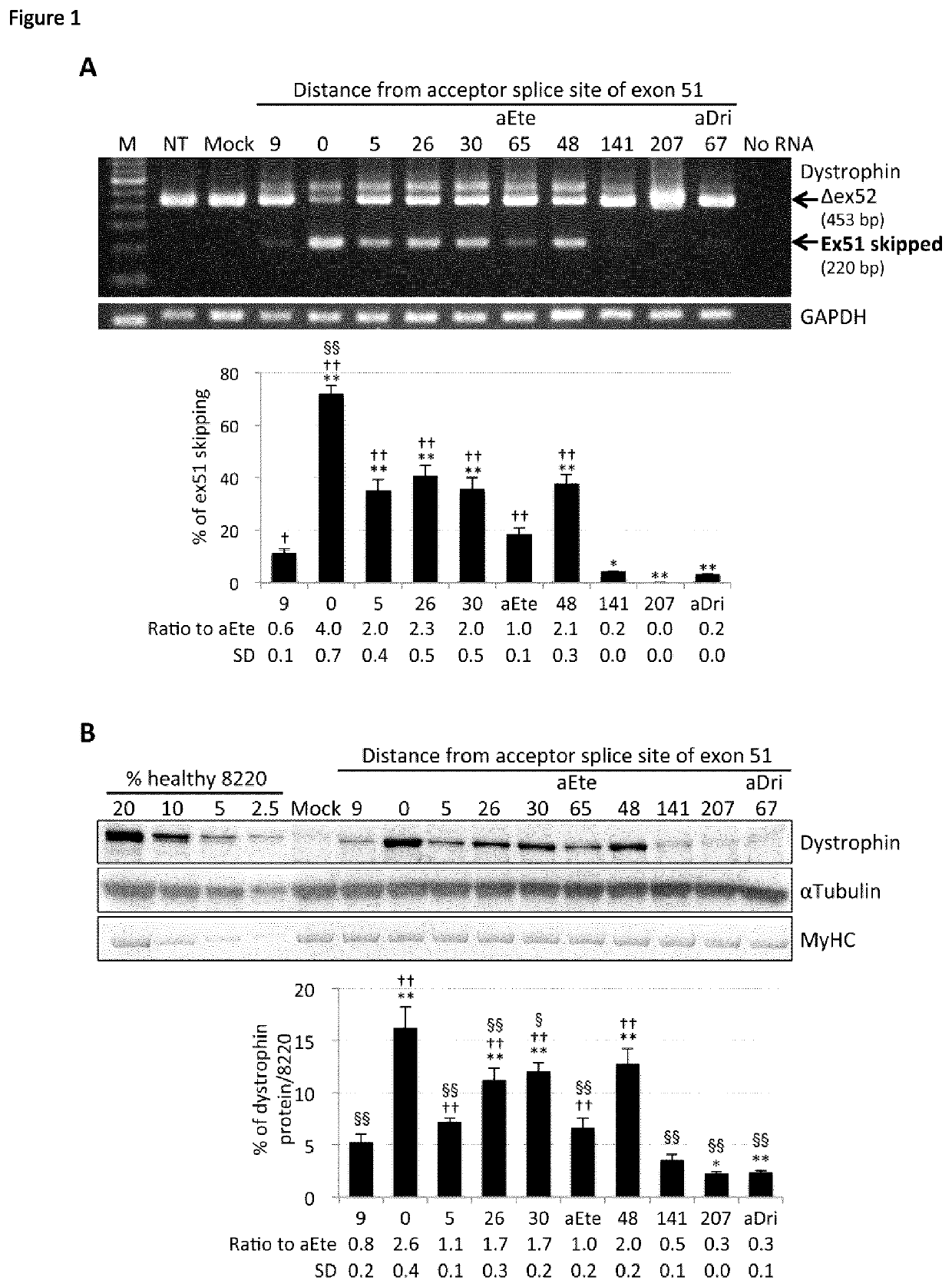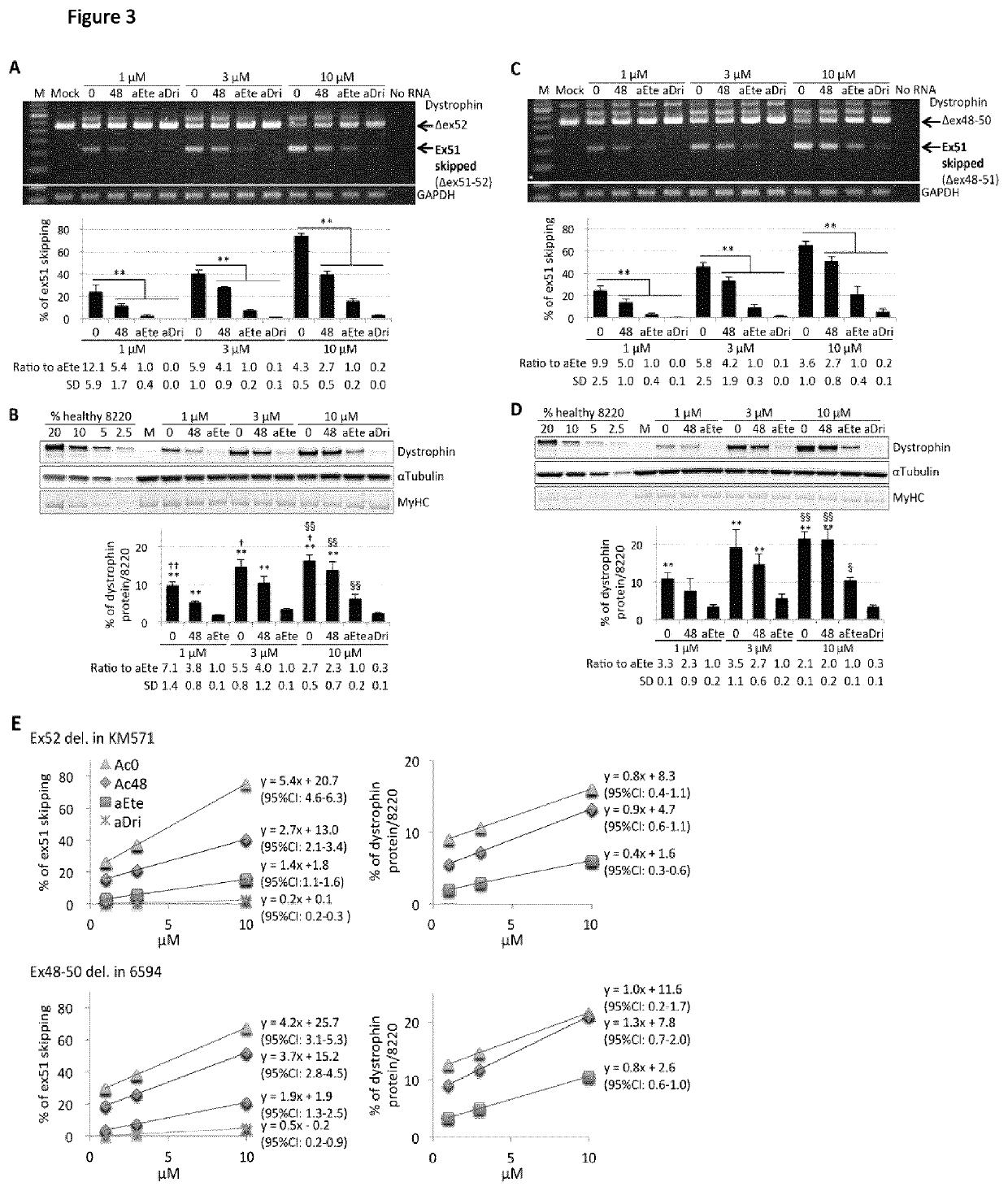Antisense oligonucleotides that bind to exon 51 of human dystrophin pre-mrna
an antisense oligonucleotide and human dystrophin technology, applied in the field of therapeutic antisense oligonucleotides, can solve the problems of eteplirsen remaining controversial, affecting the production of functional dystrophin, and no significant improvement in muscle function, so as to increase the expression of human dystrophin protein
- Summary
- Abstract
- Description
- Claims
- Application Information
AI Technical Summary
Benefits of technology
Problems solved by technology
Method used
Image
Examples
examples
1. Materials and Methods
1.1 Design and in Silico Screening of AOs
[0183]413 30-mer and 25-mer AOs targeting exon 51 were designed and analysed using the AO predictive algorithm we recently developed (see Table 3). Table 3 shows in the columns from left to right; the exon number, the distance from acceptor splice site, the AO sequence (5′ to 3′), the predicted skipping %, and the ranking within the screen. The left hand AOs are 30mers and the right hand AOs are 25-mers. Based on predicted exon skipping efficiencies, 8 AOs spaced at least 4 bases apart were selected for in vitro screening (Table 2). Target sequence specificities of selected AOs, eteplirsen, and drisapersen were analysed using The University of California, Santa Cruz Genome Browser (http: / / genome.ucsc.edu / index.html), confirming that the AO sequences theoretically do not bind any non-target RNA sequences with 100% identity.
1.2 Antisense Morpholinos
[0184]All antisense sequences, including analog AOs of eteplirsen and dri...
PUM
| Property | Measurement | Unit |
|---|---|---|
| Fraction | aaaaa | aaaaa |
| Fraction | aaaaa | aaaaa |
| Fraction | aaaaa | aaaaa |
Abstract
Description
Claims
Application Information
 Login to View More
Login to View More - R&D
- Intellectual Property
- Life Sciences
- Materials
- Tech Scout
- Unparalleled Data Quality
- Higher Quality Content
- 60% Fewer Hallucinations
Browse by: Latest US Patents, China's latest patents, Technical Efficacy Thesaurus, Application Domain, Technology Topic, Popular Technical Reports.
© 2025 PatSnap. All rights reserved.Legal|Privacy policy|Modern Slavery Act Transparency Statement|Sitemap|About US| Contact US: help@patsnap.com



